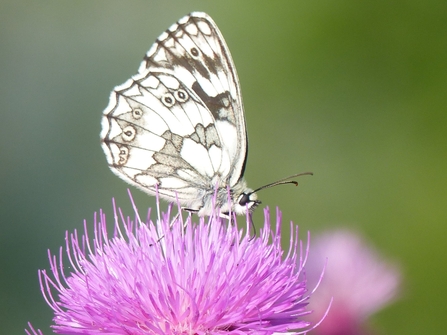Even during the age of Covid-19 life goes on. One way of assuring yourself of that is to get out and about and take a look at the diversity of wildlife on BBOWT reserves.
As soon as I was allowed, I was out and about on my local reserves and looking to see what I could find. There was always something beautiful and nearly always something I had never seen before.
I am one of the many volunteer BBOWT recorders and I specialise in invertebrates. One of my favourite places is Dancersend, which has a long history of invertebrate records starting with the Rothschilds who recognised how special it was for wildlife.
Despite the long history of recording at Dancersend the species list is constantly being added to. Some species are genuinely new to the reserve as they move with climate change or are accidentally introduced, but others are small and over looked or genuinely rare and dependent on the continued management of the reserve.
Recently I was on my way back to the car and saw something lurking under a hazel leaf. It was a sawfly busy laying an egg, but which one? I got my camera out and took some shots. When I got home I checked out the British Sawflies website and discovered it was one of four Nematus species, and it might be something rare.
I put it on iRecord and, to my delight, the expert for this group Andrew Green tentatively agreed with my identification that it could be the first sighting of this species in over 70 years in the UK!


